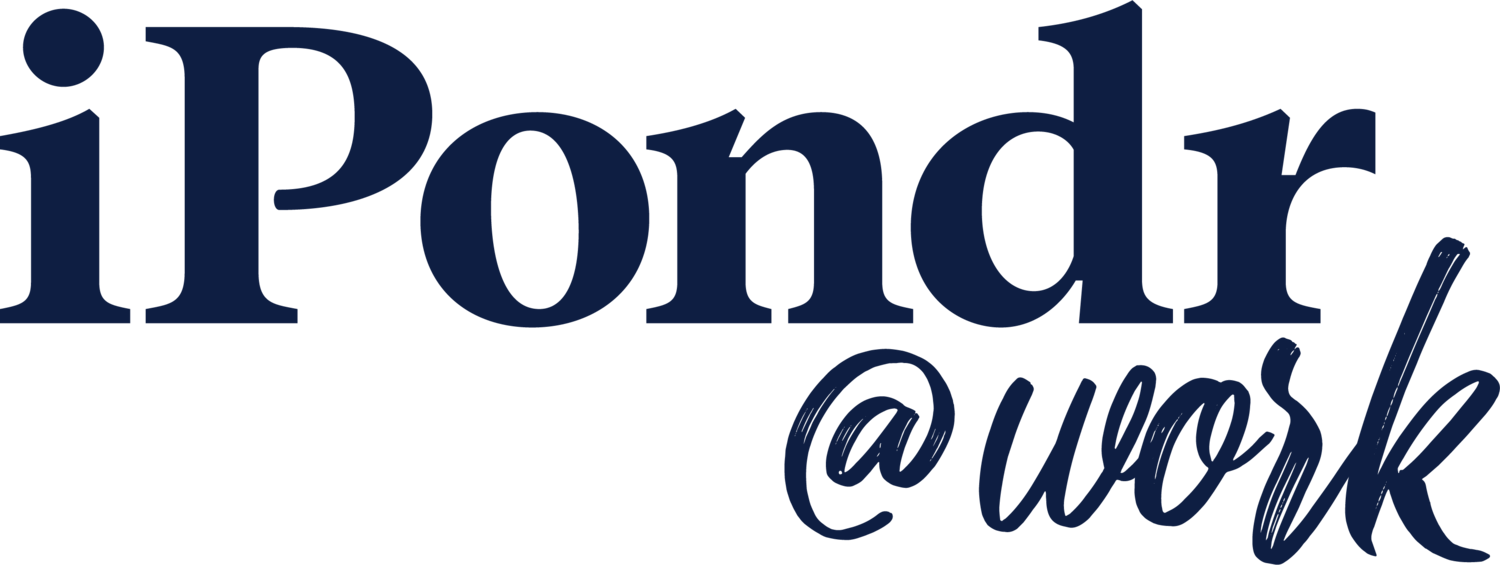Pause and pondr
WHAT DOES IT MEAN TO ‘COVER’ AT WORK?
Covering and code-switching are common workplace practices utilized in order to fit in — do the costs outweigh the perceived benefits?
DID YOU KNOW?
Although racial code-switching is presented as an impression management strategy, it may reinforce white professional standards and generate social and psychological costs for Black employees.
WHAT YOU’LL LEARN
The difference between covering and code-switching
How adapting language or other parts of their persona may help some people succeed
Why curiosity and openness to cultural differences in the workplace can help historically underrepresented employees feel more comfortable being their authentic selves
What does it mean to cover or code-switch?
Jerry Graham grew up in the Caribbean, in what he calls a traditional household with his mother and father. The 52-year-old former early childhood educator recalls knowing at age 12 that he was gay, yet he hid that part of himself from his parents, relatives, and friends for most of his life, opting instead to avoid conversations that could reveal his interest in men.
As a teenager, Graham recalls feeling trapped and downplaying a portion of himself to fit in with his peers in high school. Covering and code-switching were the mechanisms by which he tempered his behaviors that could possibly identify him as gay, when interacting with his family or with prospective clients for his once-thriving daycare business.
Covering is the act of hiding or downplaying a part of our identity in order to fit in. Code-switching is a related, yet separate, term that refers to the practice of altering speech, dialect or behavior based on a social or cultural setting. For some, the term code-switching might mean that a person changes their intonation, their body language, or the way they pronounce certain words in order to present a more mainstream persona in the workplace or other environments. For others, it may mean hiding their sexual orientation, or refraining from speaking in their native tongue to prevent criticism, bullying, or being ostracized.
Why is it especially hard for people of color to be themselves at work or school?
Overall, 4 in 10 Black and Hispanic adults and a third of whites say they often or sometimes feel the need to change the way they talk around others of different races and ethnicities, according to one Pew study. Black college graduates, particularly those under 50, are especially likely to feel compelled to do so when talking around people of other races.
In a 2019 Harvard Business Review article “The Costs of Code-Switching,” researcher Courtney L. McCluney and her colleagues say that code-switching is one of the key dilemmas that Black employees face at work.
Despite this, code-switching can also be seen as a tool or an asset for some, including bilingual speakers like Federico Rios, an assistant director for the Office of Equity, Mobility and Immigrant Integration for the city of Charlotte, North Carolina. Rios, a New York native born to a Colombian mother and Puerto Rican father, often interpreted for his mother growing up, and views code-switching as a method of adapting the message in order for the recipient to understand.
“I understand why it’s looked down upon, because it’s (seen) as having to ‘speak white.’ For me… it depends on the rooms I’m in and the position I hold in the conversation. I think it’s one of the biggest benefits in my life … but also one of the greatest burdens because your brain never turns off and it sucks you dry. You have to think so many steps ahead in a conversation,” he said.
Is code-switching or covering at odds with being authentic?
Research suggests that being your authentic self at work can make you happier, and improve your mental well-being. Employers should foster inclusive environments where there aren’t any repercussions for being authentic.
But opinions vary about whether practicing code-switching or covering means you’re being inauthentic. “It’s exhausting, but I wouldn’t go as far to call it inauthentic (as) it’s an authentic part of the Black American experience,” Dione Mahaffey, an Atlanta-based business psychologist has said. “Code-switching does not employ an inauthentic version of self, rather, it calls upon certain aspects of our identity in place of others, depending on the space or circumstance.”
Still, many others believe that code-switching stifles diversity and enables a culture of conformity — while imposing a psychological toll — essentially putting the ability to be authentic at risk.
Regardless of where they stand, people can do their part to understand the phenomenon. Rios recommends that employers and employees familiarize themselves with the subject of code-switching and the reasons behind it. He also suggests challenging cultural preconceptions and creating opportunities to bring people with shared experiences into the same spaces through resources such as affinity groups or employee resource groups.
“There’s this push for diversity, equity, and inclusion (DEI). … Dialects and language are part of it too. Just because a person speaks differently doesn’t mean they’re less than or incapable,” he said.
As researcher Courtney L. McCluney has said, inclusiveness is a daily practice. Being curious and learning about social and cultural differences is one element of this practice, but ensuring that historically underrepresented employees are listened to and are able to give their input is vital.
And most of all, the ability to be one’s self requires psychological safety, or as one organizational behavior expert has said “an environment where people can freely take interpersonal risks by sharing their true concerns” and enacting change.
Pondr This
What does covering and code-switching mean to you?
Do you ever feel like you need to hide or downplay parts of your identity from others?
Think of three ways you can help others feel at ease and foster authenticity in your daily life.
FOR LEADERS
What constitutes a person’s “identity”?
Think of three ways you can create a workplace environment where your co-workers can bring forward their authentic selves.
How does your workplace create opportunities for employees to talk about their identities and foster a culture of authenticity?
Explore The Stories
Authenticity and covering: A toolkit
Exploring the subtle — and explicit — demands to cover
-
Mahoney was a staff photographer and Director of Multimedia for the Rocky Mountain News in Denver for a decade. In 2000 and 2003, he was part of the photo teams at the News that won Pulitzer Prizes for Breaking News Photography.
After the paper closed, he helped form the investigative news start-up, I-News, and later became the Director of Multimedia for the PBS affiliate in Denver when they merged. Mahoney started his career with the Associated Press.
He and his family live in Colorado with Shiloh the Wonder Dog and spend too much time playing hockey.
How code-switching impacts a company’s overall succeSs
-
Loán (pronounced Lo-An) Lake is a communications professional and published author who enjoys bringing the stories and accomplishments of others to life. Specializing in feature writing, public relations and multicultural branding, Lake’s recent work has focused on economic mobility and the arts sector.
Throughout her career she has worked with Fortune 500 companies, nonprofits and Congress.
Originally from St. Thomas, U.S. Virgin Islands, Lake understands the importance of inclusive and diverse communications that create powerful narratives. She is the author of a profile series, “Jewels of the Virgin Isles,” that featured professionals in the U.S. Virgin Islands diaspora.
Lake is a 2009 inductee into the Temple University Gallery of Success. She holds a master’s in tourism and hospitality management from Temple University in Philadelphia, Pennsylvania, and a bachelor’s in journalism from the University of Maryland at College Park. She resides in Charlotte, North Carolina, with her husband.
Topic in Review
We look at the impacts of practicing code-switching and covering in the workplace.
Continue Your Journey
In this Pause and Pondr, we discussed the work of Courtney McCluney on code-switching. McCluney, who is an assistant professor of organizational behavior at Cornell University’s IRL School, published a study in July 2021 along with her colleagues called “To Be, or Not to Be … Black: The Effects of Racial Code-switching on Perceived Professionalism in the Workplace,” in the Journal of Experimental Psychology. They say that the study’s findings suggest that workplaces would benefit from looking at the ways they might inadvertently reward code-switching behaviors.
“Companies often claim that they want employees to ‘bring their whole selves to work,’ without realizing that they are unintentionally penalizing Black employees who do not fit into the culture. To help combat this, I would recommend that companies expand or redefine what constitutes professionalism so that it encompasses a range of cultural norms, behaviors and values,” McCluney said.
In order to do so, the report suggests that organizations examine and question the unspoken cultural norms that exist in their workplace, and scale back measures that monitor appearance and behaviors for marginalized employees. “As perceivers are not always privy to the fact that their Black colleagues may be codeswitching, they may unintentionally reward White cultural norms as they may be more likely to be seen as points of connection and similarity,” McCluney and her colleagues write. “Equipping all employees with the capacity to constructively engage with difference may help alleviate the pressure on Black employees to navigate others’ perceptions.”
In a 2019 Harvard Business Review article, McCluney and her fellow researchers listed some steps on where to start.
On an individual level, in terms of being authentic and bringing your full authentic self to work, people have different opinions as to what that means. It’s not a one-size-fits-all.
As Kenji Yoshino, a constitutional lawyer has said, there’s not a single answer to being authentic — ”What authenticity is going to look like is going to be different for all of us. And oftentimes, what may be covering behavior for one individual may actually be somebody else's authentic self, and vice versa,” he said.
In the end, we have to navigate what authentic means to us in connection to others — a loyalty to our values and beliefs as well as how it relates to the environment we’re in and our comfort level.






